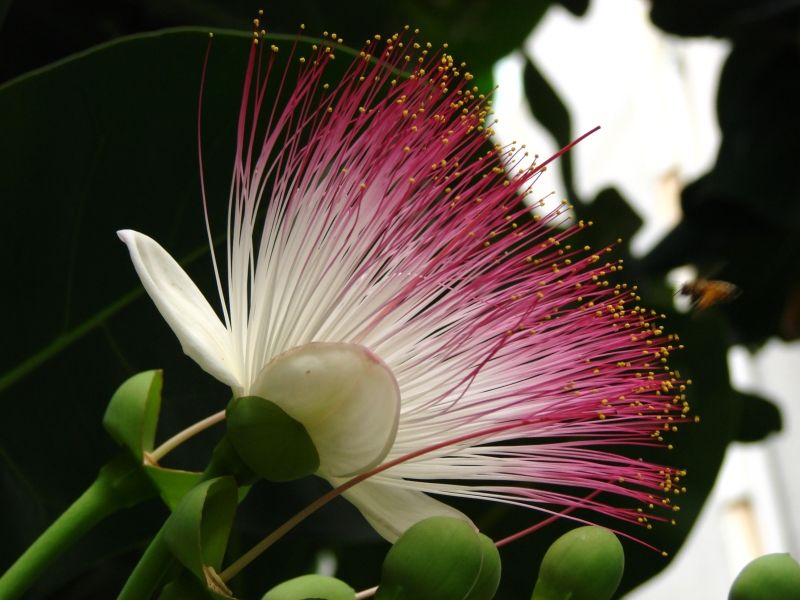Fish poison tree
Species
Families
Local Names
Genus
Native/Introduced
DNA Barcode
Description
Barringtonia asiatica (fish poison tree, putat or sea poison tree) is a species of Barringtonia native to mangrove habitats from islands of the Indian Ocean in the west to tropical Asia and islands of the western Pacific Ocean. It is grown along streets for decorative and shade purposes in some parts of India, for instance in some towns on the southeastern shore. It is also known as Box Fruit due to the distinct box-shaped fruit it produces. The local name futu is the source of the name for the Polynesian island Futuna. It is a small to medium-sized tree growing to 7–25 m tall. The leaves are narrow obovate, 20–40 cm in length and 10–20 cm in width. Fruit produced as mentioned earlier, is otherwise aptly known as the Box Fruit, due to distinct square like diagonals jutting out from the cross section of the fruit, given its semi spherical shape form from stem altering to a subpyramidal shape at its base. The fruit measures 9–11 cm in diameter, where a thick spongy fibrous layer covers the 4–5 cm diameter seed. The fruit is dispersed in the same way as a coconut – by ocean current – and is extremely water-resistant and buoyant. It can survive afloat for up to fifteen years; it was one of the first plants to colonise Anak Krakatau when this island first appeared after the Krakatau eruption. When washed ashore, and soaked by rainwater, the seeds germinate.









































































































































